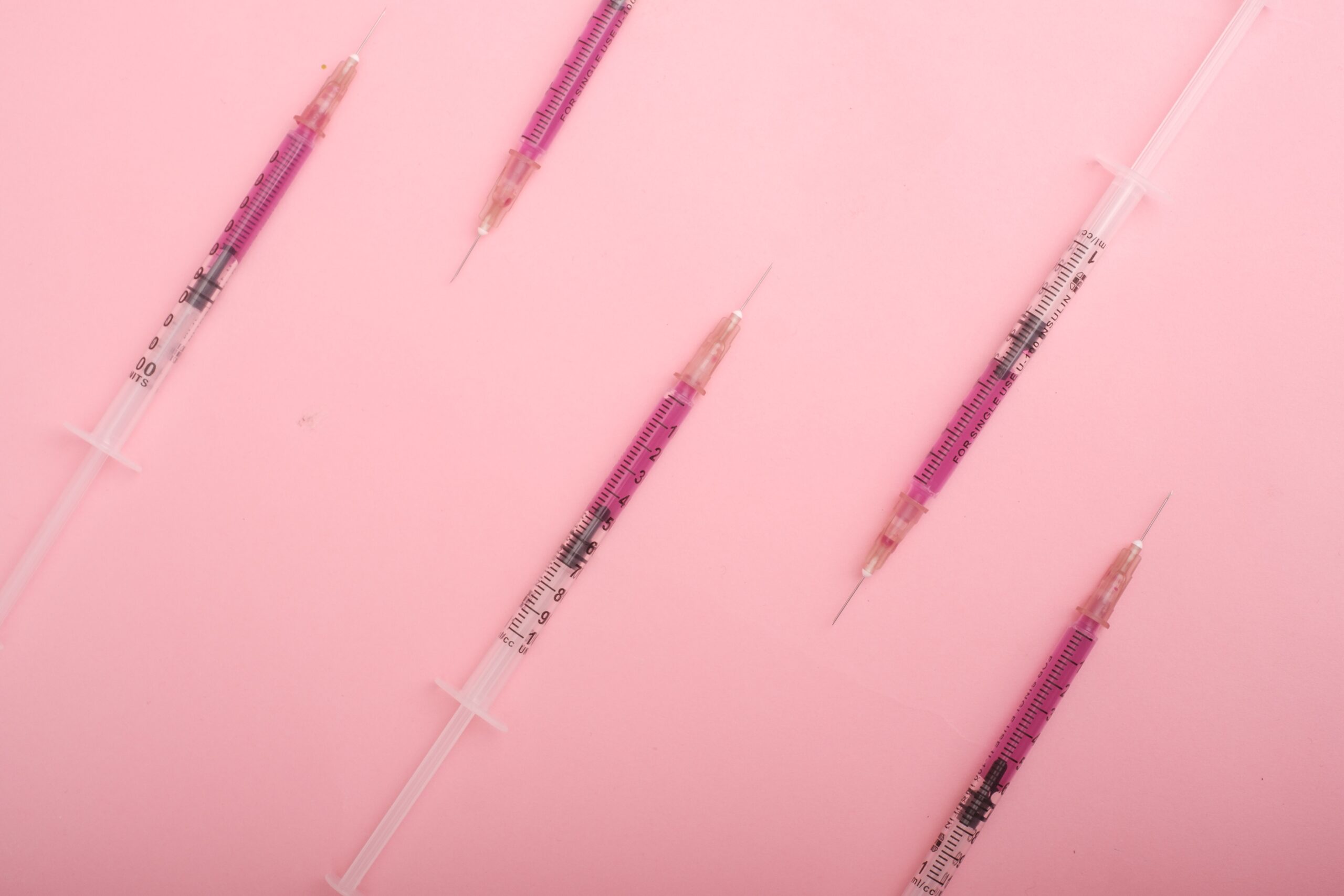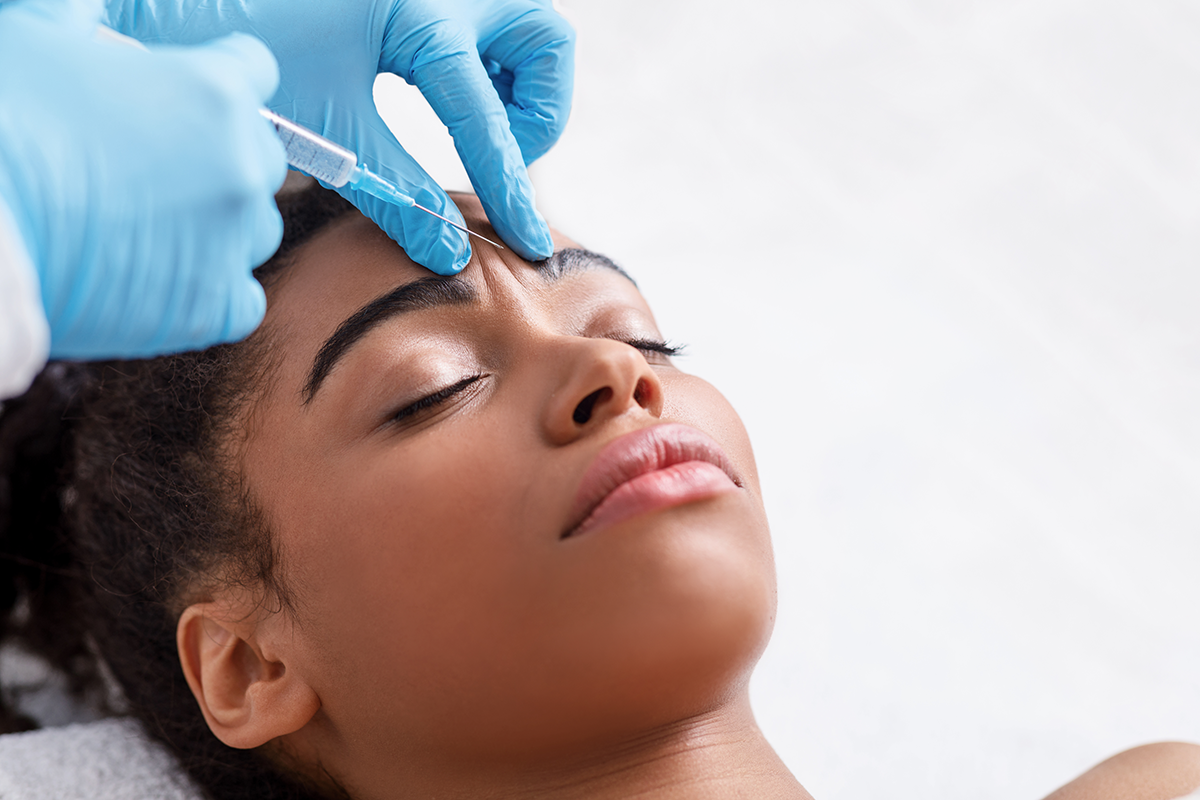Is it really Botox, or something else? Use this guide to understand the differences between botox and other products in the neurotoxin family.
Botox has become the umbrella term for any type of wrinkle reducing treatment – kind of like Kleenex is for tissue. When your friend told you they got Botox, chances are good it was actually Botox, as it’s among the most popular treatment of its kind. But, there’s also a chance it could be another neurotoxin.
Botox has been used for decades to treat fine lines and wrinkles. It really has become the common name for botulinum toxin type A (BoNTA) injections. Made by manufacturer Allergan, Botox was the first commercially available Botulinum toxin type A in the United States. It’s approved by the Food and Drug Administration (FDA) for the temporary improvement of moderate to severe lines and wrinkles.
Botox is not the only BoNTA injection available. There are a few other names to learn in this class of cosmetic neurotoxins. If this is news to you, we’ll encourage you to ask your injector what product they use – it’s worth knowing. Plain and simply put, Botox…is Botox. Nothing else can be Botox. Are we saying it’s the best product for you? No. In fact, we inject Botox and Dysport at our clinics, but we do want to make sure it’s important that you know what kind of product you’re receiving when you go for your neurotoxin treatment.
When it comes to neurotoxins, your most popular options are:

In this guide, we’ll have a look at each of these products: what they are, how they work and how they compare to each other.
Before comparing the different neurotoxins, it’s important to understand how a neurotoxin works.
The substance used in botulinum toxin Injections (Botox) comes from the bacterium clostridium botulinum and uses the active ingredient botulinum toxin type A. It works by blocking nerve signals from the nerves to muscles in the areas of the body in which it is injected. It is usually injected into the forehead or around the eyes for cosmetic purposes, but can also be injected into the upper lip for a lip flip, in the masseter muscles for jaw slimming, or into the neck area to smooth horizontal and vertical lines and wrinkles.
It is used to reduce the appearance of fine lines and wrinkles that are caused by aging and repeated facial expressions such as frowning, squinting or smiling. By preventing the muscles from contracting, Botox prevents lines and wrinkles from forming on your face. This treatment is an excellent non-surgical option for those wishing to refresh their appearance.
Botox can also be used for medical uses such as treating migraines or excessive underarm sweating.
For most consumers, it’s hard to exactly pinpoint the differences between the products. They all last a similar amount of time and provide similar results. However, their specific biotypes and manufacturing processes make them all different. If you’re someone who has experienced more than one type of neurotoxin injection, you may understand the differences in their onset and efficacy. You may even have a favorite.
The four different types of neurotoxins are made by different manufacturers which means they differ in terms of their formulations, potencies, and cost. The active ingredient in each product is Botulinum Toxin Type A, but each type features different blends that can affect the way the substance works in your body. It’s important to find a provider who knows the differences and can help you find the right treatment.
18 years ago, Botox became FDA approved for use as a temporary aesthetic treatment to improve the appearance of frown lines (glabellar lines) in April 2002. Since then, it has also been approved to treat forehead wrinkles and crow’s feet.
Key features to be aware of in Botox include:
Dysport was approved by the FDA in April 2009 to treat frown lines. It has also been approved for some therapeutic uses too.
The way Dysport is made up is slightly different to Botox, so it’s final result may differ slightly. It spreads further which makes it a better treatment for larger areas such as your forehead. Typically, you may need more Dysport over Botox because of the way it is manufactured.
Key features to be aware of in Dysport include:
Xeomin was approved by the FDA for the treatment of frown lines in 2011 and can also be used for some medical conditions too.
Xeomin does not contain any additives which means it does not require refrigeration and can make it slightly more comfortable to have injected as it is stored at room temperature.
Due to its purified state of BoNT-A, some patients who develop resistance to Botox and Dysport may find success with this treatment.
It can take five to seven days for the results of Xeomin to show, and the results last a similar amount of time to Botox, Dysport and Jeuveau.
Jeuveau (Newtox) is the newest neurotoxin injectable and was approved by the FDA exclusively for cosmetic use in 2019.
Jeuveau is approved to improve the look of moderate to severe frown lines between the eyebrows (glabellar lines).

The main differences between the treatments are their formulation which affects the usage of their doses, the spread of the products and the duration of results.
| Botox | Dysport | Jeaveau | Xeomin | |
| Procedure Type | Non-surgical | Non-surgical | Non-surgical | Non-surgical |
| Manufacturer | Allergan | Galderma | Evolus | Merz |
| Type of Botulinum Toxin Type A | onabotulinumtoxinA | abobotulinumtoxinA | prabotulinumtoxinA-xvfs | incobotulinumtoxinA |
| FDA Approved Treatment Areas | Frown lines, Forehead lines, Crows feet around the eyes | Frown lines | Frown lines | Frown lines |
| Pain | May experience slight tingling upon injection or bruising around the injection site post treatment. | May experience slight pain at injection site after treatment | May experience bruising, redness, pain, or headaches after treatment | May experience slight bruising around the injection site |
| Number of treatments required | Need to follow up every 3-4 months to maintain desired results | Need to follow up every few months to maintain desired results | Need to follow up every 3-4 months to maintain desired results | Need to follow up every 3-4 months to maintain desired results |
| Expected results | Results can be seen within 7 days with full results at 10-14 days | Within 2 days after injection with optimal results at 14 days | Results can be seen in two to ten days and will last from 3-4 months | Results show within a few days to a few weeks and results last three to 4 months |
| Noncandidates | Pregnant or breastfeeding women, and people who take certain medications for muscle spasticity. | People who have milk allergies and take certain medications for muscle spasms. Not recommended for pregnant or breastfeeding women. | Pregnant or breastfeeding women, people who have been diagnosed with nerve or muscle conditions, those who have had an allergic reaction to Botox in the past. | Pregnant or breastfeeding women, people with allergies to botulinum. |
| Recovery time | Little to none | Little to none | Little to none | Little to none |
If you’d like to know more about having Botox treatments, please book your free consultation at our Denver or Greenwood Village clinic.
The Medical Spa and other skin care information contained on this website is provided for educational purposes and should not be taken as medical advice. To consult with one of our specialists in Denver and Greenwood Village, please contact us today for a free consultation. Facial Aesthetics – Our premiere Denver medical spa serves patients from Denver, Littleton, Cherry Creek, Castle Rock, and nearby communities in Colorado.
Facial Aesthetics is proudly owned and operated in Colorado, USA.
Copyright ©2020 | Website Designed, Developed and Optimized by Canvas Chicago.